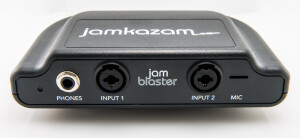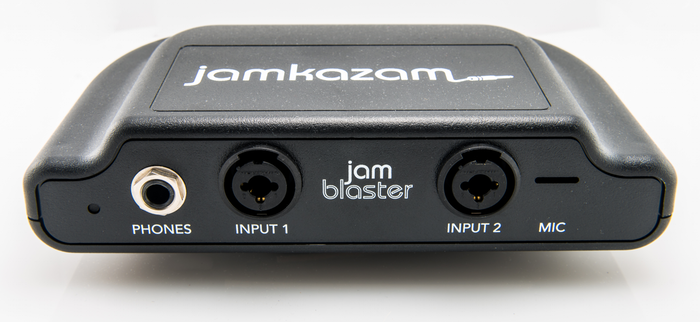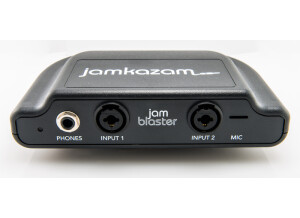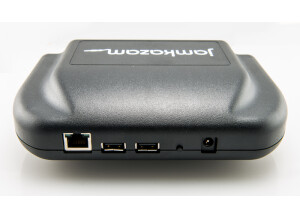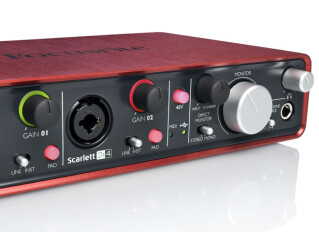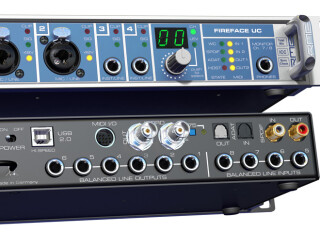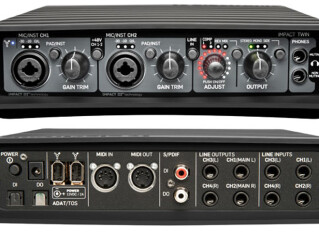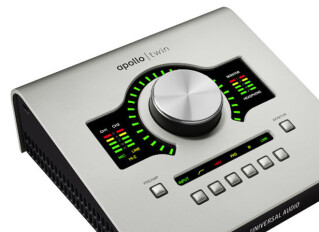Annonces JamBlaster
Alerte nouvelle annonceForums JamKazam JamBlaster
News
Images
Vidéos
Fiche technique
- Fabricant : JamKazam
- Modèle : JamBlaster
- Catégorie : Interfaces audio Ethernet
- Fiche créée le : 19/02/2015
The JamBlaster USB and Ethernet audio interface allows realtime playing/audio streaming between musicians in different locations with the JamKazam platform
- JamBlaster Computing Resources
The JamBlaster includes a quad-core 1.2GHz ARM processor, 1GB memory, 8GB storage, and GigE Ethernet network connectivity. It runs a Linux operating system with an optimized real-time kernel, and the entire system has been designed, architected, and optimized end-to-end to deliver blazing audio processing speed. - JamBlaster Audio Quality
The JamBlaster uses premium audio components throughout to deliver superb audio quality on par with audio interfaces that were designed only for recording. The JamBlaster delivers up to 24-bit, 96kHz premium audio. Frequency response for mic/line/instrument inputs is 20Hz – 20kHz +/-0.2dB. THD+N is -107dB for mic inputs and <-100 dB for line and instrument inputs. - Input Ports
The JamBlaster features two Neutrik combo ports on the front, so you can plug in either 1/4" (TS) or XLR style connectors. Each input port can be individually set to accept line level (lo Z) or instrument level (hi Z) inputs, and each input port can be individually set to supply 48V phantom power if needed. - Headphone Port
The headphone port accepts a standard 1/4" TRS connector from your headphones. - Chat Mic
The horizontal cutout labeled "MIC" on the front of the JamBlaster is a built-in chat mic you can use to talk with other musicians while in sessions. - Ethernet Port
The Ethernet port on the rear of the JamBlaster is a GigE Ethernet port, and the JamBlaster must be connected to your home router using an Ethernet cable (not included) for Internet connectivity. We are considering supporting WiFi USB sticks via the USB ports on the rear of the JamBlaster, but WiFi usually causes substantial latency and audio degradation, so we are not committing to enabling this capability. We will continue to consider it as a possibility as routers improve over time. - USB Ports
The JamBlaster includes 8GB of onboard storage, and the Linux operating system and JamKazam application that run on the JamBlaster use less than 1GB of this storage. For musicians who want more storage capacity for recordings, we plan to support a short list of "certified" USB memory sticks that you can buy and plug into a USB port to expand the JamBlaster's storage capacity. - Reset Button
This button is available in case troubleshooting is needed on the JamBlaster. For example, it can be used to hard reset the box to factory defaults. - Power Supply
The JamBlaster's power supply (included with the JamBlaster) is rated for 100-240VAC 50/60Hz, so it works with both North America's standard 120V/60Hz and Europe's standard 220V/50Hz power infrastructure. Please note that the physical power supply plug is a standard US plug type, so if you live outside the US, you will need to use a plug adapter (not included), but not a power converter. - Compatibility with Recording SoftwareThe JamBlaster may be connected to Windows and Mac computers using a USB cable (not included), and will act as a "normal" audio interface when used in this configuration, so you can use it with your favorite recording software (e.g. Avid ProTools, Ableton Live, Steinberg Cubase, Reaper, GarageBand, etc.).
- Controls
The JamBlaster is controlled using a companion app that can run in a standard browser on Windows, Mac, and Linux computers. Or you may control the JamBlaster using a companion app that can run on iOS or Android tablets and smartphones.
»
Autres catégories dans Interfaces audio
Autres dénominations : jam blaster


